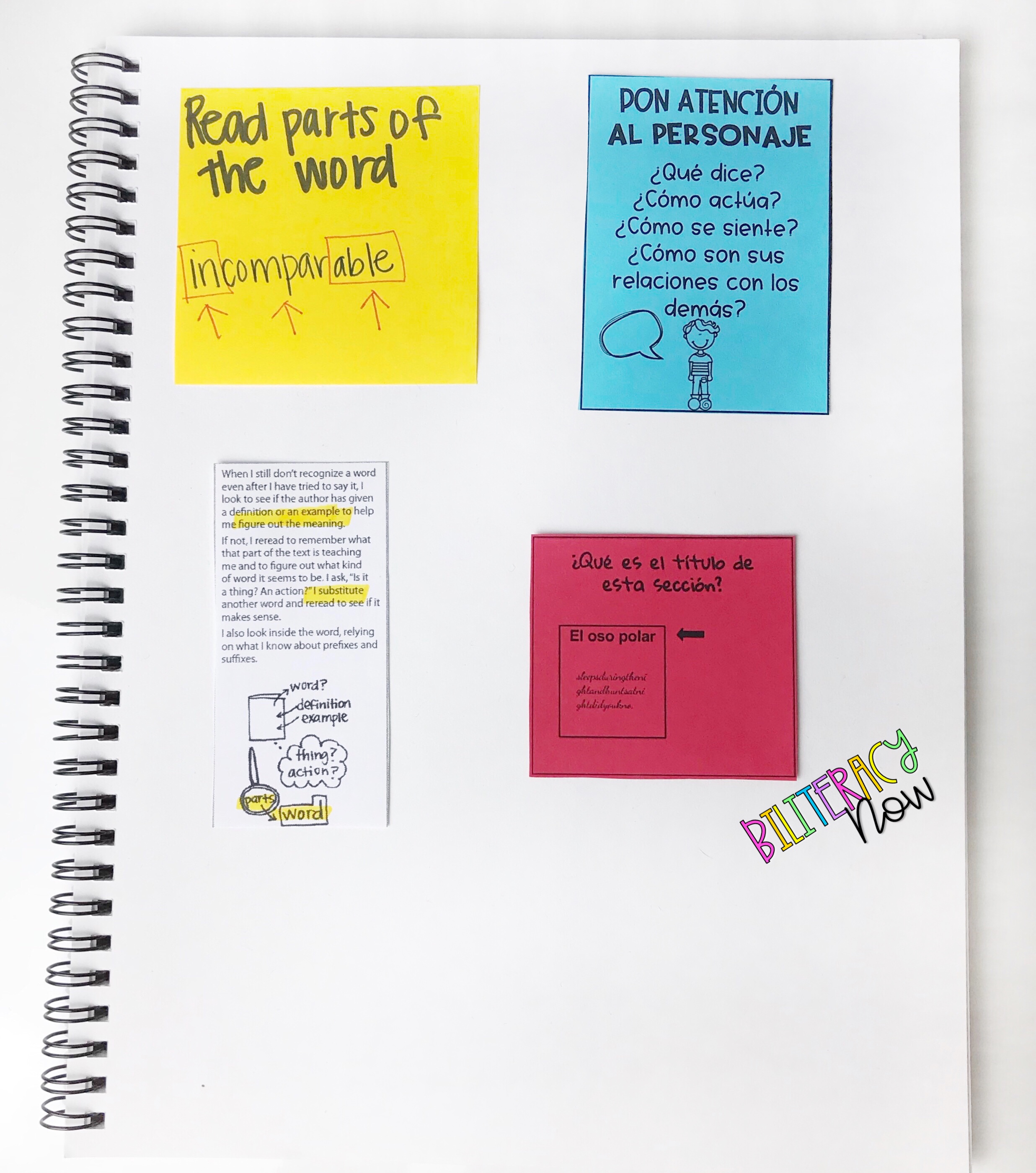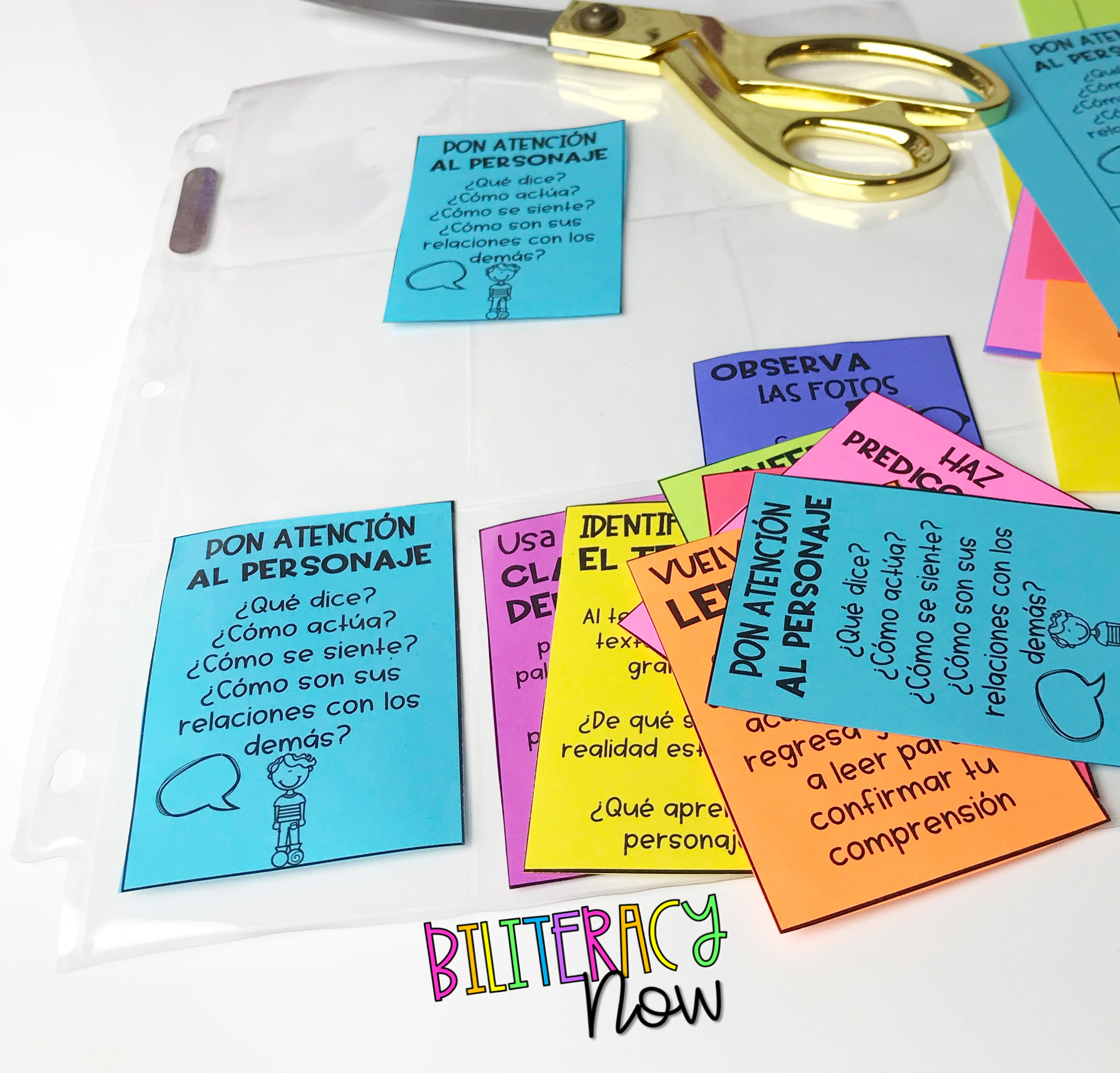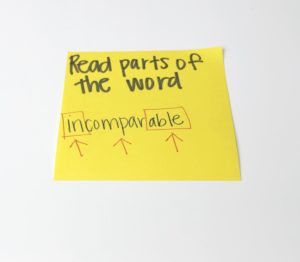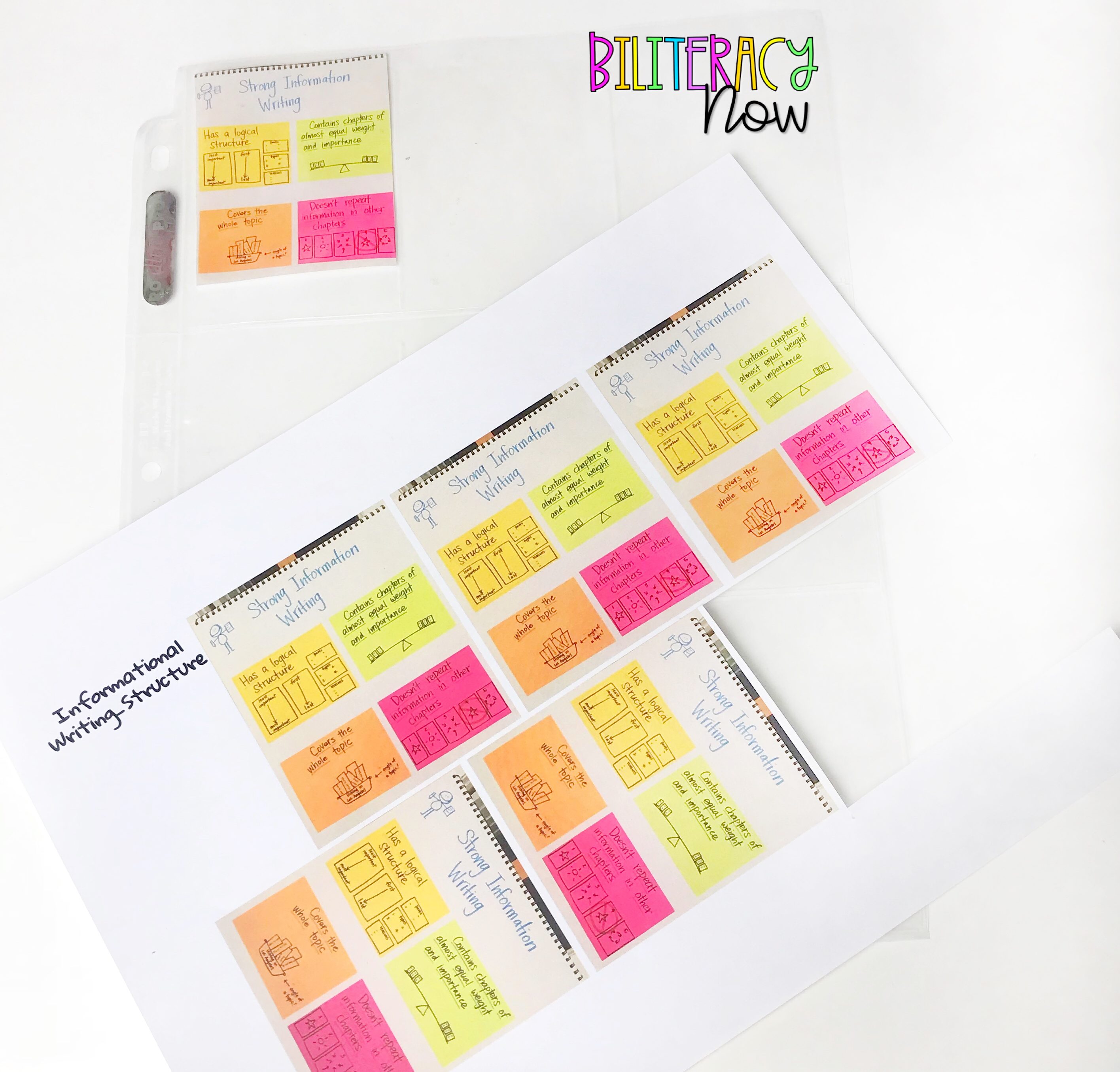Q: What happens after a student gets pulled for small group?
A: They go off and practice on their own.
Q: How can I make sure they remembered what I just taught them?
A: You give them a takeaway!
If you’re confused by the term “takeaway,” then let me just say that you’re in for a treat! I LOVE the idea of takeaways for two reasons. First, it gives students something to use as a reference once they get back to their desks and independently work. And second, it serves as documentation for you.  Before going further into the purpose of a takeaway or artifact or visual (whatever you want to call it!), let’s discuss what it means. An artifact includes a few words and a visual of a reading strategy (e.g main idea). Upon completion of the small group lesson, the teacher gives one to each student as a recap of what she/he just taught and then sends them off to independently practice. The goal is for the visual to trigger the student into practicing that specific strategy as they’re reading. Below is a picture of various takeaways, and as you can see from these examples, they’re pocket-sized.
Before going further into the purpose of a takeaway or artifact or visual (whatever you want to call it!), let’s discuss what it means. An artifact includes a few words and a visual of a reading strategy (e.g main idea). Upon completion of the small group lesson, the teacher gives one to each student as a recap of what she/he just taught and then sends them off to independently practice. The goal is for the visual to trigger the student into practicing that specific strategy as they’re reading. Below is a picture of various takeaways, and as you can see from these examples, they’re pocket-sized.

TIP: I’d recommend having minimal writing on artifacts for grades K-2. For those grade levels, it’s best to have them focus on the VISUAL instead of the words, because many might still be emergent readers.
As the teacher, you get to decide what your takeaways look like and how to keep track of them. One way you can organize them is by storing inside baseball card holders or three-hole punched baggies-both of which fit nicely inside your toolkit binder. Having the takeaways precut and organized increases the likeliness of actually passing them out and using them regularly.

For lasting results and to eliminate the potential of finding them on the floor by the end of the day, have students glue them inside their journals once they get back to their desks. After a few weeks, the students will have a collection of artifacts they can refer back to as they move up reading levels and encounter more complex texts. More importantly, teach your students to write the date on each takeaway to help them come up with goals and keep track of their progress.
This sounds great, right? But what happens if your small group lesson takes another direction and none of your premade artifacts apply? This a question I get all of the time. It’s simple, actually. Whip out a sticky note and create your own artifact right then and there! Believe me, small group lessons are very unpredictable and of course, not everything always goes as planned. But please remember: you don’t need to provide your students with a takeaway after EVERY small group lesson. As I always say, it has to feel organic.

Don’t have the time or energy to create brand new, fancy artifacts? No worries! You can also take pictures of your anchor charts, paste the picture into a Word document, shrink it and make numerous copies of it on one page, and then print! This is probably the easiest and fastest way to stock up on takeaways. See the example below.

My teachers love creating these types of takeaways, in particular, because their small group lessons always align with what they taught during their whole-group lesson. This year we really pushed our teachers to use artifacts and it shows! Some of our students have pages and pages of takeaways. The most rewarding part is seeing them treat their journal as a toolkit. Can you believe it? Just like the teacher has a toolkit binder to help them teach, the students now have a toolkit journal to help them learn! It makes it all worth it. 🙂
Finally, I’d like to stress the importance of using artifacts during your writing block, as well. If you noticed on this post I mainly talked about reading, but this does not mean that they’re not helpful in other subjects- they are! I could honestly see the benefit of using these in a math class. Can’t you? Oh man, it almost makes me want to teach math again….almost. 🙂
Thank you for reading. Comment below!
Hi!
Do you ever let the kids make their own takeaways? Sometimes I spend 3-4 minutes writing the post-it’s out on the strategy then I think, “my vision might not be what they need to trigger thinking”. What do you think?
That’s a great idea! I think it depends on their level and how quickly they can write/draw. One time I had students take way too long writing out their own takeaway. So, now I just ask them to choose an icon as I draw it out for them. They love it!
Love that.
I noticed that sentence frame takeaways are super helpful.
In 2nd we use, “my character ________. That makes me think _______. “ that way they have a frame to help them jot.
Yes! We use those, too. We call them sentence stems down here. 🙂